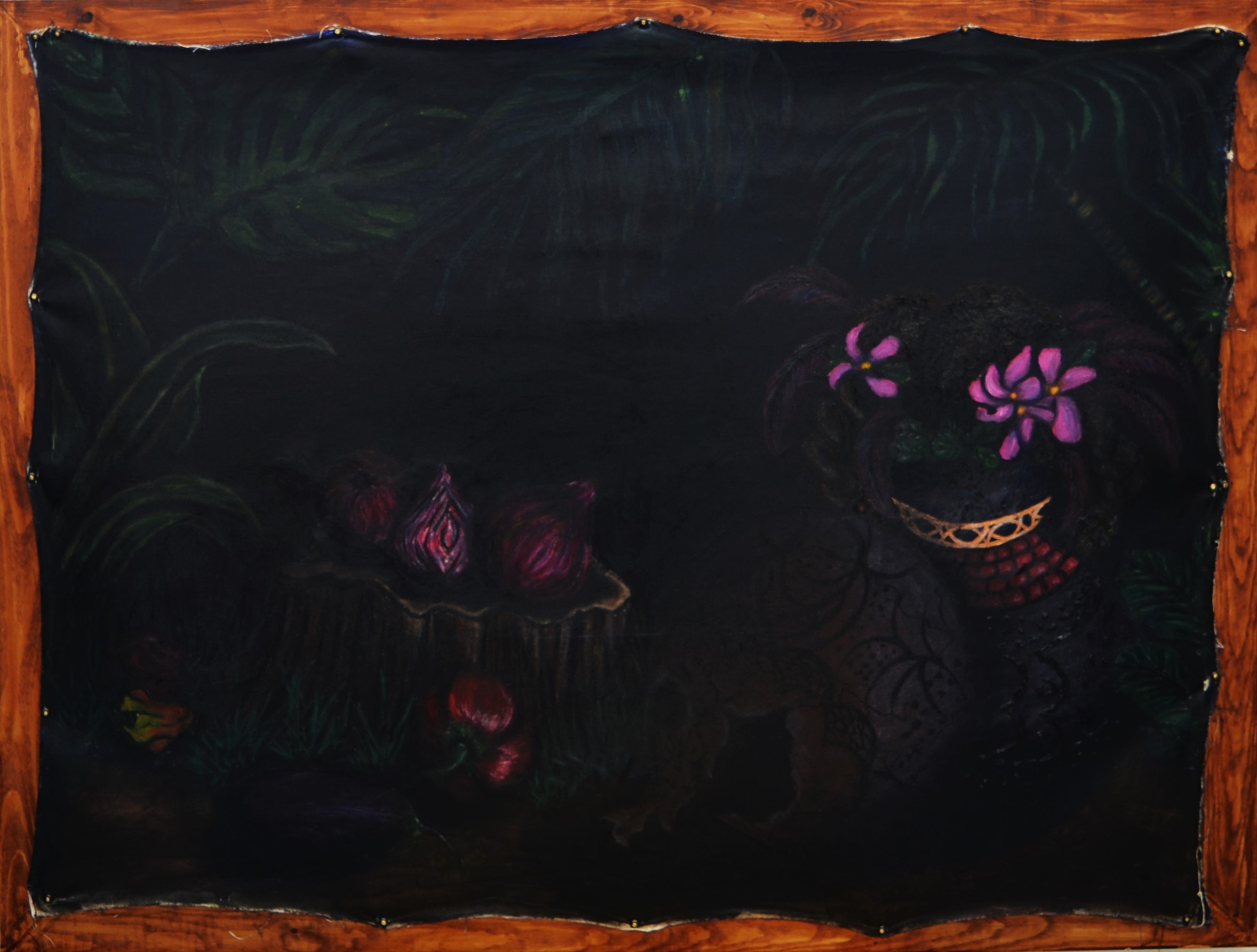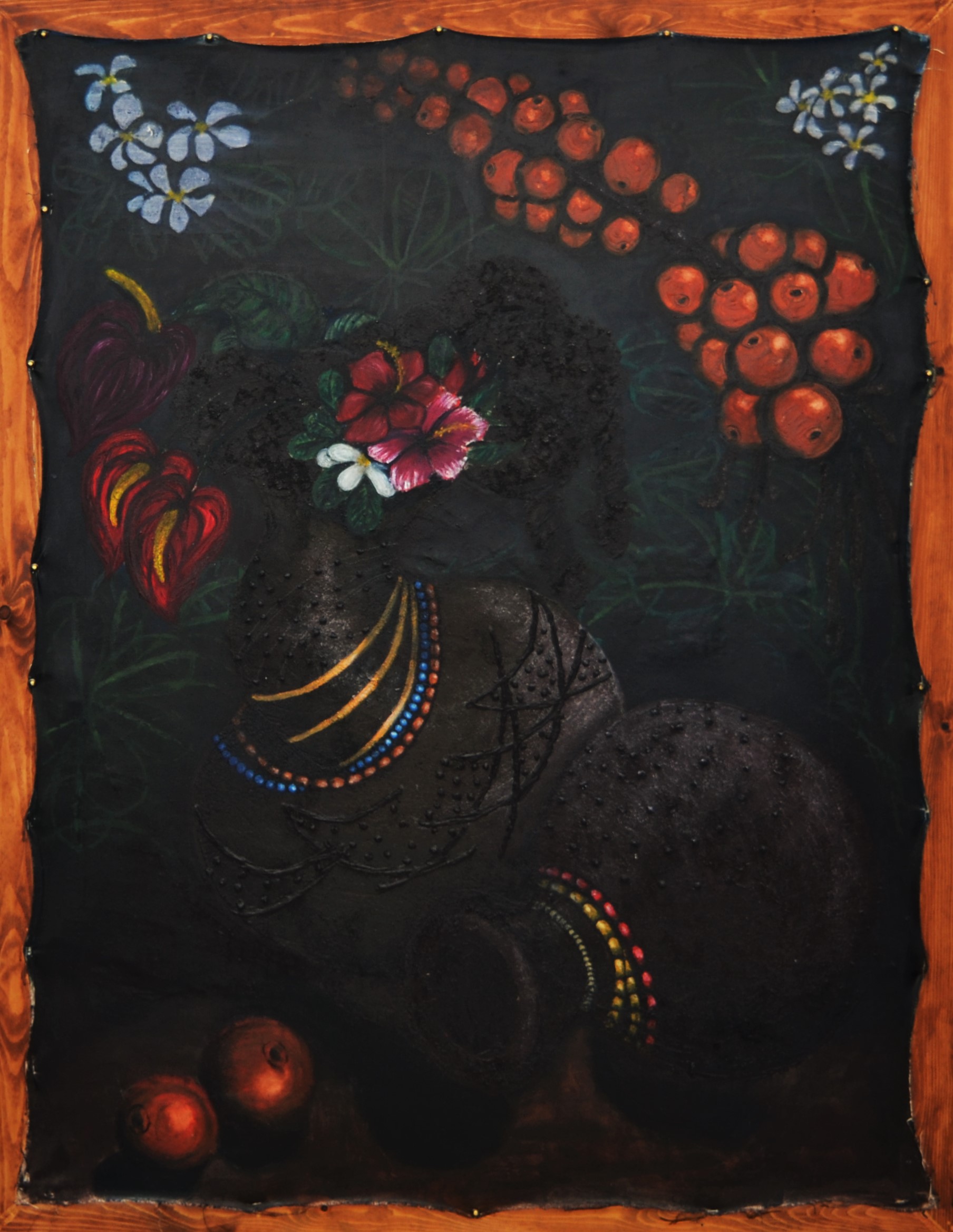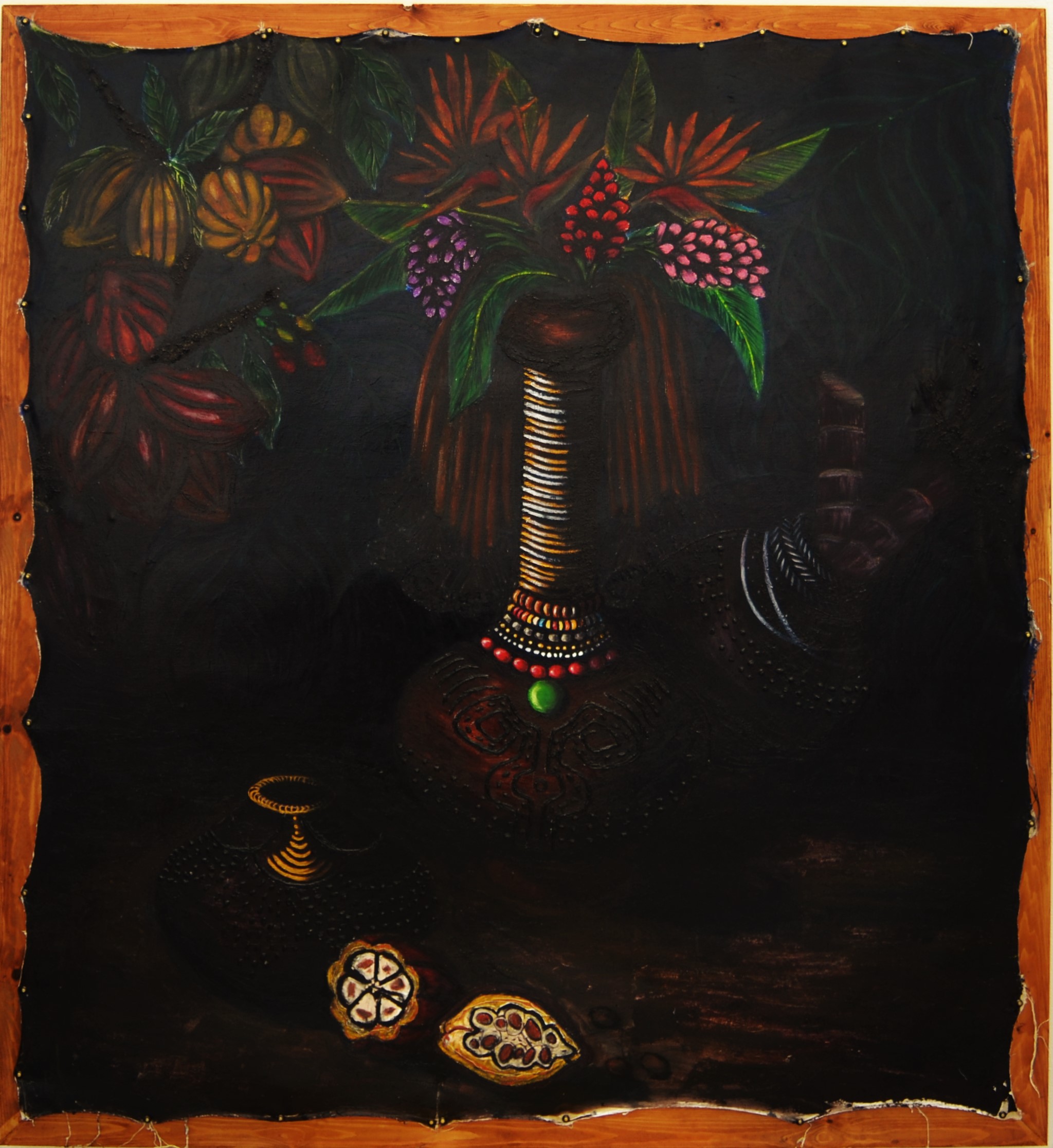
“Art has to be a visual experience that not only entertains the eye, but inspires the mind.”
These are the words of Foluso Oguntoye, a 2016 graduate of Fine Art at Manchester Metropolitan University. His still-life paintings focus on capturing what he believes to be an aspect of West African identity, sparking feelings of nostalgia in the process. In each piece, nature shines through as a formidable force. It’s present in the tropical flowers that make the backdrop of these paintings, as well as the vessels themselves that bubble over with local fruit and vegetables. This celebration of natural imagery comes with political statement. In his work, Folu speaks to his native Nigeria asking for a revising of a former, simpler way of life centred on agriculture, as opposed to the corruption characterised by the oil industry of the present day. Furthermore it also serves to reflect his own personal somewhat unconventional ambition, to become both an established artist, and a successful farmer. Folu’s art constructs a West Africa that draws upon its pre-colonial past, predating Western influence. It prides itself upon features such as scarification, folk tradition and certain hair styling, of which are intrinsic to West African cultural identity.
Folu has taken an ultimately European genre of painting, still life, and re-imagined it into what can now be labelled as “Afromantic” art, in its romanticising of the African past. The “exotic” manner in which African people were painted into most 17-19 century still-life works, reflects the hostile climate of the period. The emergence of the still-life genre coincided with the rise of slavery, and the birth of consumerist society. The African was merely a symbol of wealth, status, and colonisation. European attempts to blot out the identity of the African man and woman came to be illustrated in the exaggerated blackened out forms their bodies took on canvas.
However Folu’s art is a reaction against this. His careful selection in choosing to paint items that epitomise the traditional values and aesthetics of the black African body, is a visual ode to African identity. Flowers are just one example of this. They are typically used to signify innocence and purity, making them a key feature of the still-life genre. Folu’s incorporation of flowers in his art, is his way of paying homage to the Omo valley (tribes) people of Ethiopia, who adorn themselves with impressive displays of flowers, plants and fruits as headdresses.
In reality however, the culture and livelihood of the Omo valley people is under severe threat. Large corporate investors are funding the development of industrial projects in the south-western region of Ethiopia that will gradually force tribes such as the Omo valley people, off their land. Folu’s referencing of aesthetics traits which are key to the Omo valley culture, is a demonstration of his support. “My art is a reaction to the displacement of people and their identity” Folu states, “it is an act of resistance”.
Why Vessels?
In early Yoruba cosmology the body was viewed as a vehicle incarnating the soul and spirit on Earth. Vessels themselves were seen as embodiments of the human (body); the shape of a vessel reflects the curves of a woman, whilst the bulk of a man is present in the main body of a vessel. In light of this, Folu has made efforts to humanize these vessels in his art. For instance, in certain African cultures hair played a vital role in determining ones identity. Certain hairstyles reflected both your personal status, i.e. Married or unmarried, as well as your social status within that community. Likewise, Folu has translated this into his paintings. Furthermore, as vessels were historically used for transporting things, naturally, they capture this sense of movement and purpose. The vessels in these paintings provide a gateway enabling the past and present to merge. Effectively, they are transporting figurative representations of traditional pre-Colonial African culture, to the present day. It is what Folu defines as “a projection in which the past is an alternate utopian present”.
He cites Kenyan ceramic sculpture artist Magdalene Odundo, Congolses photographer Sammy Baloji and Canadian visual artist Sara Golish, as some established contemporary artists that influence his work. These artists serve to deconstruct the African past, so as to re-inforce, celebrate and reconstruct the certain aesthetics and cultures that once weaved together, create an African identity to take pride in. “This is something I see myself doing in my own art” Folu remarks. Lastly, in terms of what Folu would like his audiences to gain from his work he states, “A sense of what was lost. A recognition of our past and how this is connected to our future. Yet moreover, a deep understanding of the richness of black African identity and persona. To keep this knowledge alive and to ensure it is not forgotten”.
Check out more of Folu’s work here.
To read up more on Omo Valley and the danger they face follow this link.












